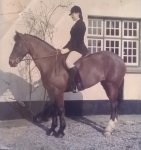Wishfilly
Well-Known Member
Surely in this case you need to find livery which has ground which is not rutted rather than keeping the horse inside for long periods?
My experience of turning out on a daily basis is that they tend not to pick up injuries because going out is not exciting for them.
On the other hand horses standing in for many hours a day are unlikely to have long careers.
How do you achieve this on heavy clay soil in a wet part of the country? Genuinely asking.


